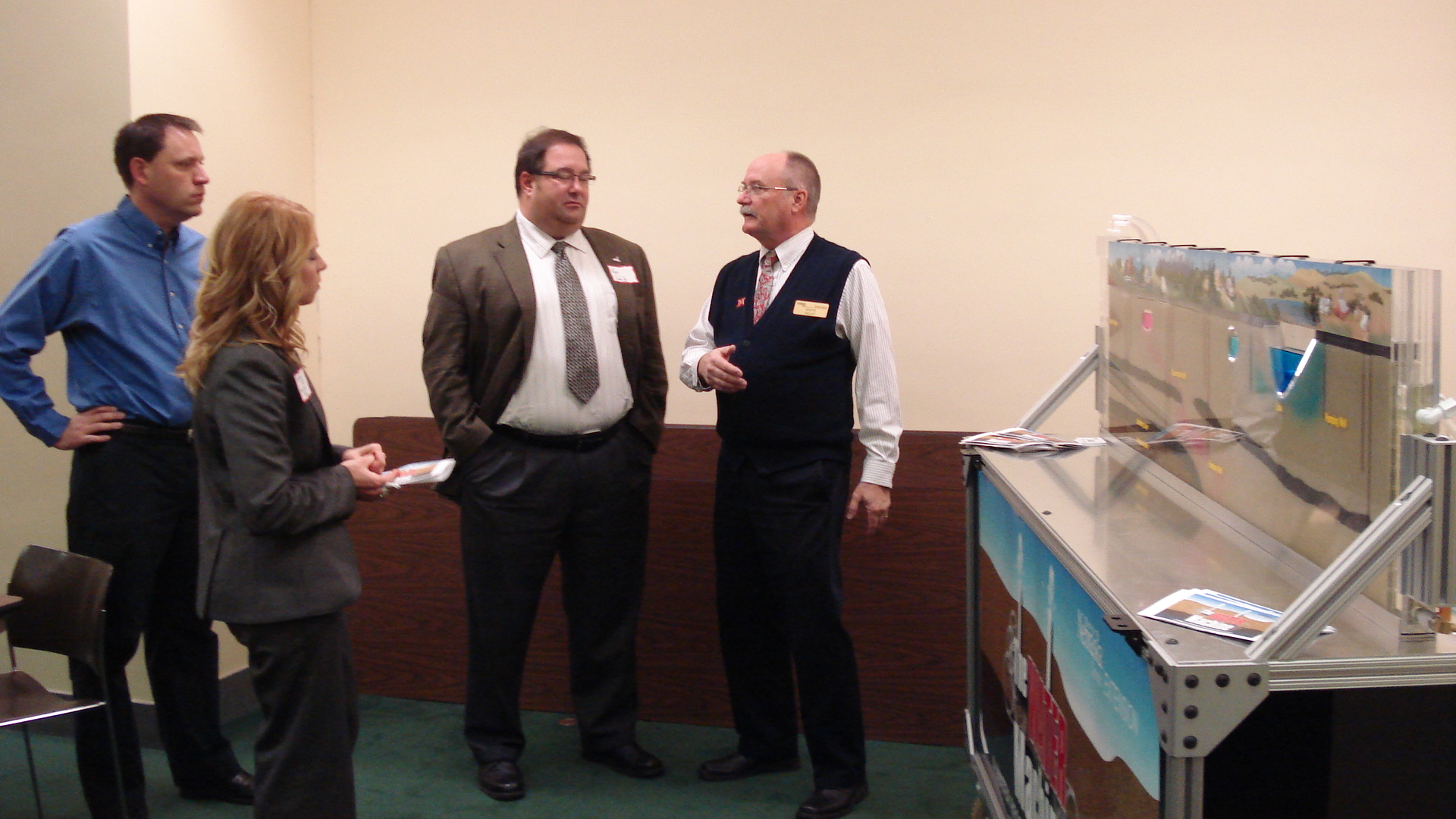
Have WATER Machine, can travel. Wayne Woldt, SNR and Biological Systems Engineering, and Alan Corr, UNL Extension, teamed up in 2005 to start designing the mobile WATER Machine, which capitalizes on people's fascination with water and how it moves through the landscape.
It's bigger than the usual tabletop model, but not as big as the one they'd really like to build someday. The WATER – that's WAter Teaching, Extension and Research – Machine is six feet long, 20 inches tall, and two inches wide, and makes road trips using a dual axle trailer. Some of the concepts it can depict include: surface and groundwater interaction, wellhead protection, urban and agricultural water use and conservation, aquifer structure, artesian aquifers, and pollution vulnerability and movement. Peristaltic pumps make water move through the simulated landscape, above and below ground level, and dyes help to visualize water movement, and can simulate pollution.
"It's real water, not a digital representation," Woldt said. "There's something about real water that attracts people."
The WATER Machine first hit the road in 2009, debuting at the River City Roundup in Omaha. Since then, they estimate there have been 7,000 educational contacts via the Machine, making presentations at Natural Resource District events, environmental fairs, the state legislature, Husker Harvest Days and more.
In 2011, evaluation showed that more than 2,410 water professionals, students and citizens across Nebraska gained greater understanding of groundwater resources through 24 events that used The WATER Machine. Pre- and post-testing found a 43 percent improvement in answering water-focused questions, and 73 percent of respondents said they had a better understanding of groundwater as a result of what they learned from the model.
The Water Machine lends itself to presentations to learners of all ages. For younger kids, Woldt said, the message is, "This is a model of groundwater. We can't look down and see it. Perhaps this is what it would it look like if we could see it."
With middle school students, educators focus more on groundwater as a source of drinking water, and talk more about the different kinds of aquifers. Middle schoolers can also begin to grasp the groundwater connection to a lake or stream on the surface.
With high school students, presenters can add information about what makes water flow, the movement of contamination through the water table, and sources of contamination, such as leaking septic tanks.
Presentations to professional groups and adults include Surface and Groundwater Quality for Drinking Water and Human Health; Understanding Surface and Groundwater Interaction for Watershed Management; Irrigation Water Conservation through Agricultural Water Management, and Understanding Occurrence of Water for Improved Efficiency of Use and Protection.
Available time is now the single biggest limitation that Woldt and Corr face in taking an expanded understanding of water to the citizens of Nebraska. They make as many presentations as they can squeeze in around their other responsibilities, but they're limited in how many days they can spend on the road. They are seeking resources that would enable them to hire a technician to transport the machine and make presentations as needed. If you are interested in considering “broader impacts” opportunities with your grant applications, feel free to contact Wayne to explore ideas with The WATER Machine.
-- Kelly Smith, SNR
More details at: http://go.unl.edu/mis